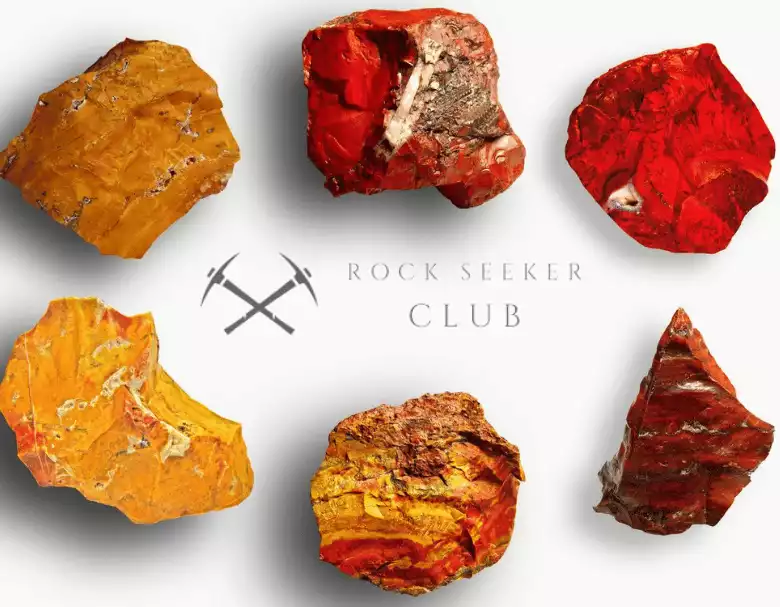Since this website has started, we’ve covered many different types of crystals and stones. I wanted to create a place where they could all be easily accessed. So I put together this list of crystals along with pictures and a short description of each different crystal and stone. If anything, perhaps it might help with identification of your own specimens.
Types of Crystals With Pictures
1. Adamite
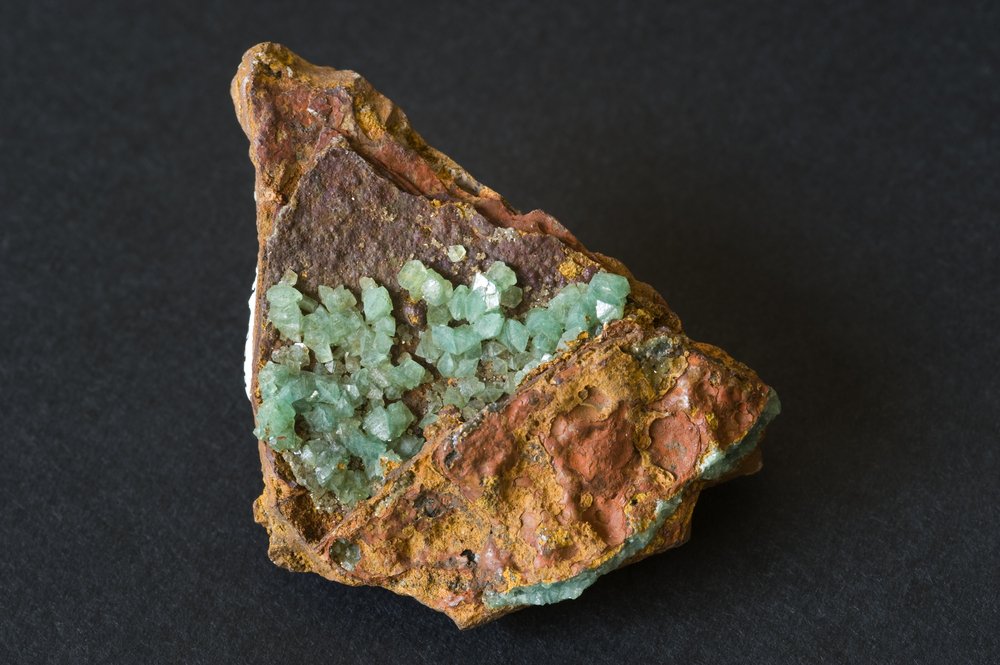
Adamite is a crystal that can occur in many different colors. When impurities are present, the color is altered, which explains adamite’s wide range of colors. Adamite has a vivid green or blue hue when copper is present, and a pink to purple tint when cobalt is present. It is a zinc arsenate with the formula Zn2(AsO4)(OH) as its fundamental chemical formula. Adamite is commonly found embedded in a limonite matrix, which is known to be a rusty, crumbly, brown material that can easily stain your hands.
2. Aegirine
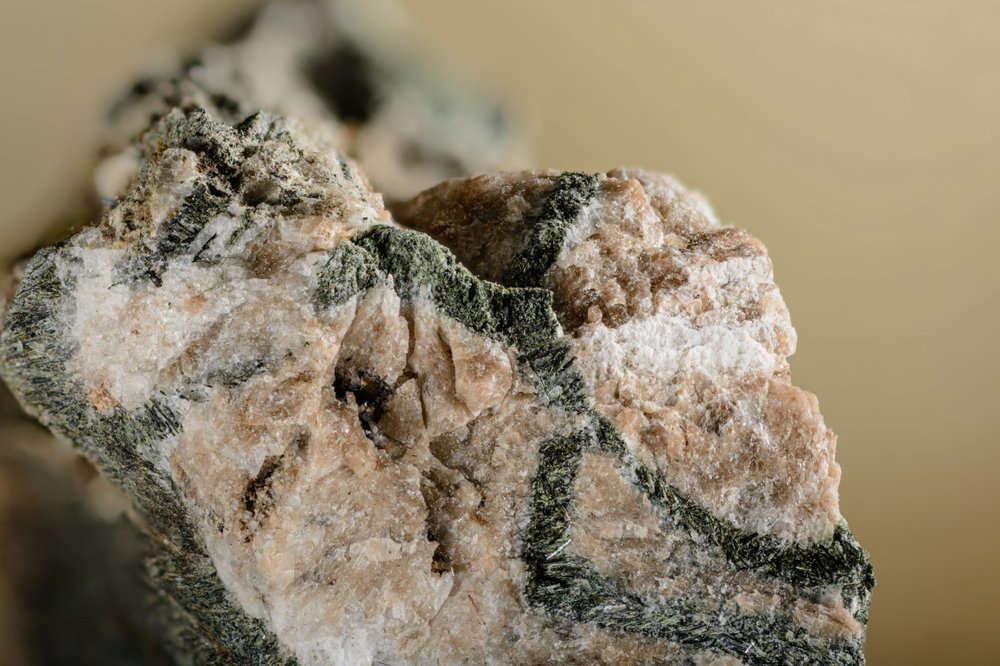
Aegirine belongs to the pyroxene group and is found in the same family as the mineral Augite. It is well recognized for its long, thin crystals with distinct terminations, and some of the most lustrous types are real classics. Hans Morten Thrane Esmark, a Norwegian mineralogist, identified aegirine (1801–1882). In honor of the finding of Aegirine near the sea, Esmark named this mineral after Aegir, a mythological Norse sea deity.
3. Agates
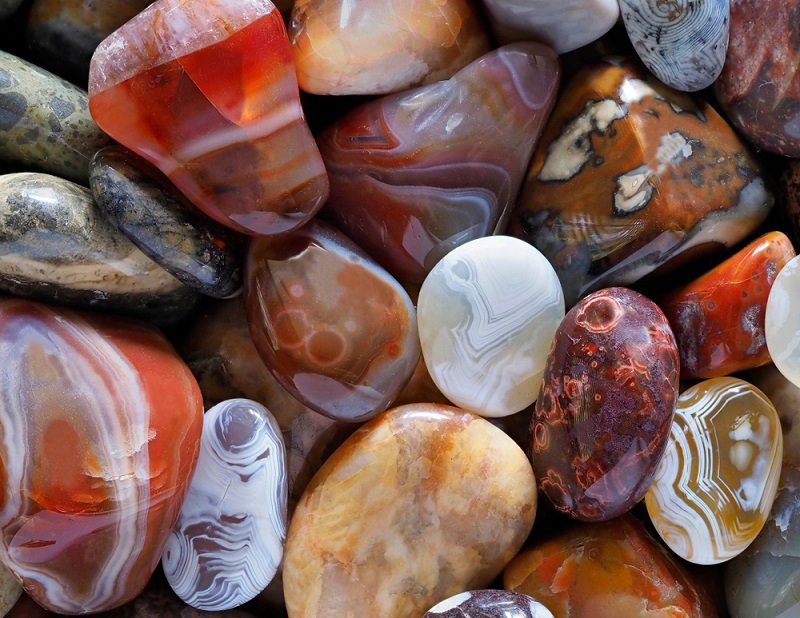
Agates are primarily made of chalcedony, which is a form of silica dioxide(SiO₂). It’s the same stuff that makes up glass, quartz crystals, and even opals.The defining characteristics of minerals usually come from their crystalline structure. Chalcedony is cryptocrystalline. The term’s root reveals the structure: crypto means hidden. These microscopic crystals are hard to see even under a microscope.
Traditionally, agate referred to banded varieties of chalcedony. These days it’s used for any stones with inclusions that are comprised primarily of transparent chalcedony. Agates are very hard, running a 7 on the Moh’s scale. This makes them perfect for carving or polishing, They have a long history of use in jewelry and as ornaments.
Read More: Ultimate Guide To Agates
4. Amazonite
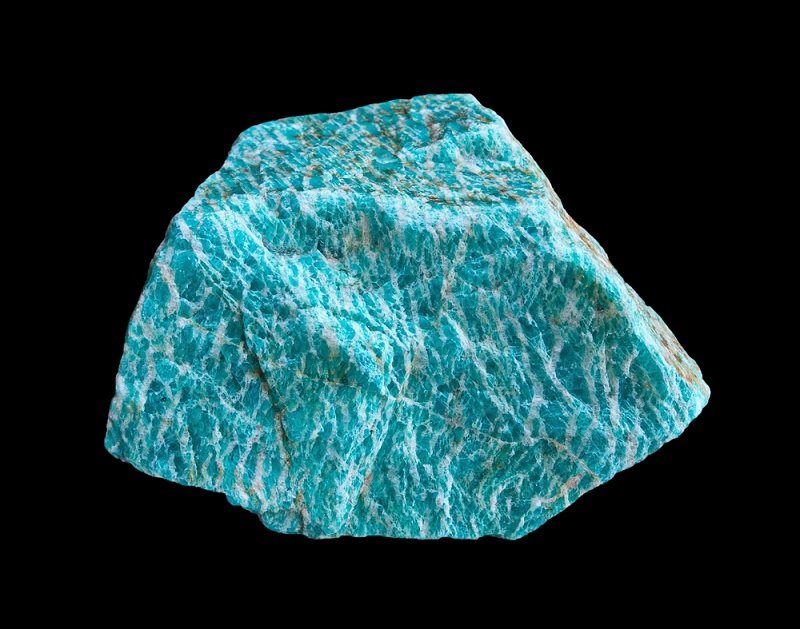
Amazonite is a green feldspar gemstone that ranges from transparent to opaque. It’s a greenish form of the mineral Microcline. Amazonite is called after South America’s Amazon River. Because there are no Amazonite deposits in the Amazon area, this stone is most likely called for its color similarity to the green of the tropical jungle.
5. Amethyst
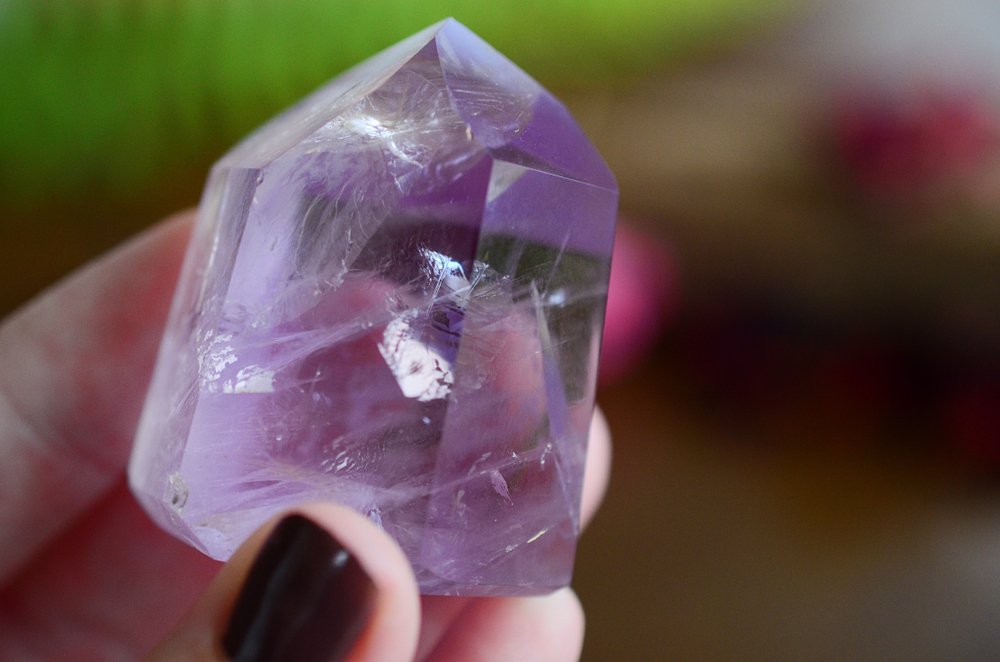
Amethyst is macrocrystalline quartz with iron inclusions that cooled below 420° C(788°F) with a purple coloration. Another 20°C and the formation could have been citrine, and if the crystals form between 420°C and 440°C then the final form is prasiolite. For most of us, the main form of amethyst is in geodes and crystal points. Both are common in the rock trade, and amethyst geodes range from golf ball-sized to bigger than a person! Since they’re relatively common you can find very affordable specimens of middling quality without difficulty.
6. Aquamarine
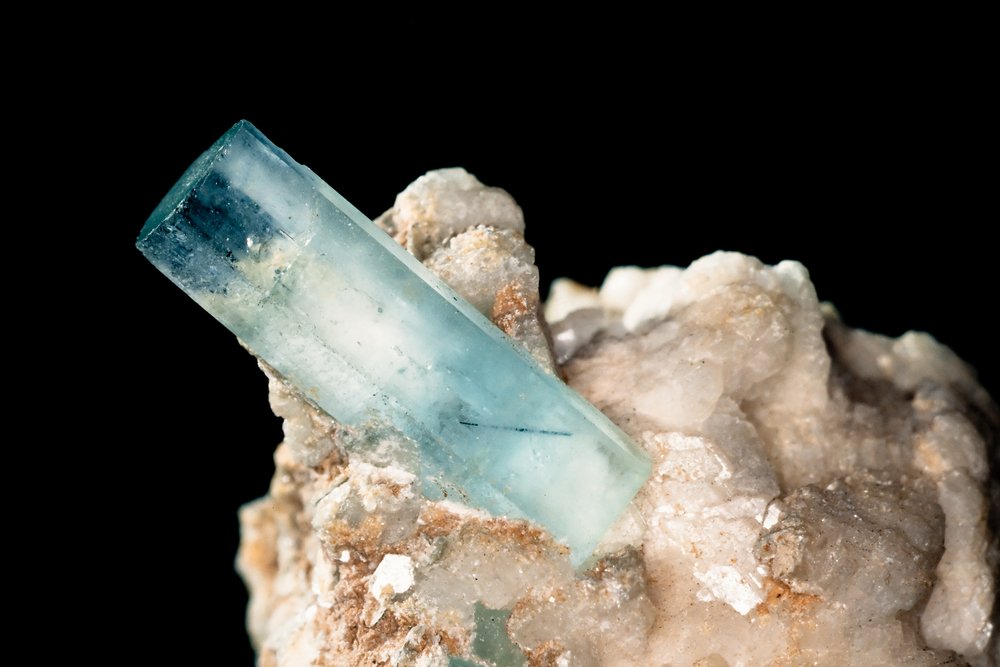
Aquamarine is a form of beryl, the same family of gemstones as emerald and heliodor. Its light blue color defines it. Most gemmy samples have very high clarity compared to others in the same family. The coloring agent in aquamarine appears to be iron molecules. These ions get trapped in the crystal lattice and depending on how things progress from there you’ll end up with either heliodor or aquamarine after a few million years.
7. Calicite
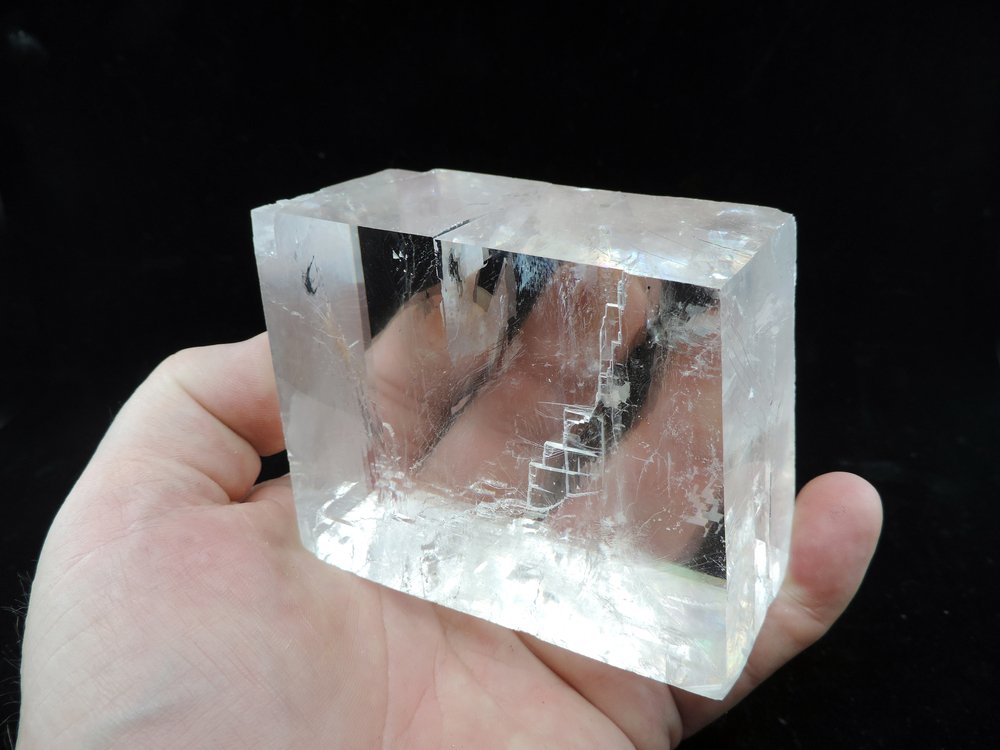
Calcite, also known as calcium carbonate, is a fascinating mineral that is one of the most common minerals on the planet, yet comes in a variety of shapes, sizes, colors, clarity. The mineral also fluoresces, phosphoresces, and may also be thermoluminescent. It can stand on its own as a singular mineral or form part of another mineral. Give calcite enough pressure, and it’ll turn into limestone and marble. Calcite is a polymorph that comes in over 800 forms and is so variable that you could collect it throughout your lifetime and never be able to get your hands on all the forms.
8. Chalcedony
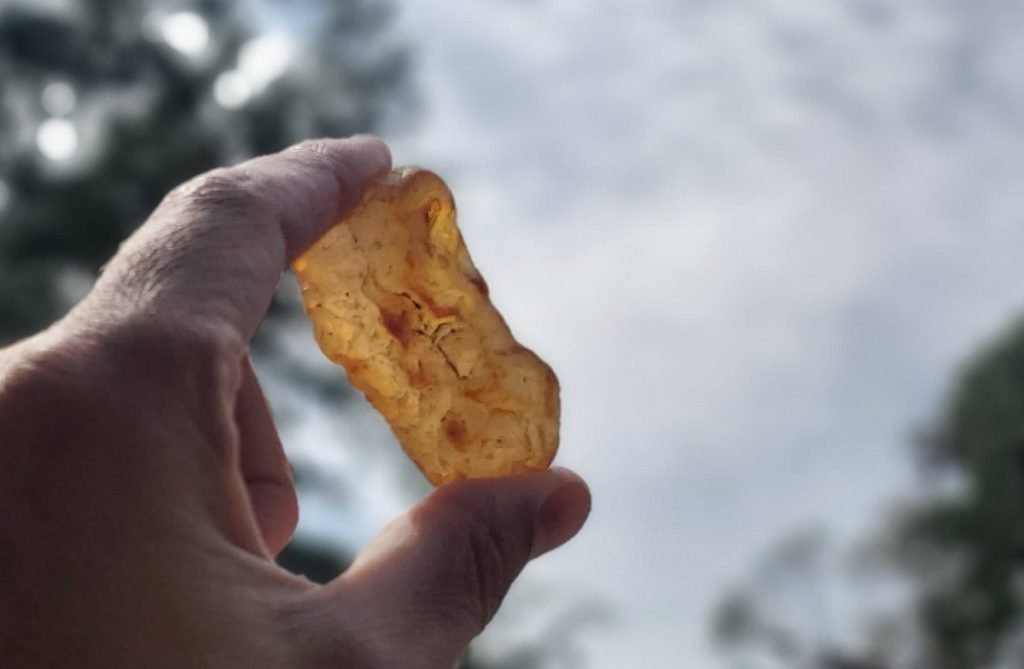
Chalcedony is a cryptocrystalline form of silica. Cryptocrystalline compounds are those that have such a fine intergrowth of crystals that it’s not even apparent under magnification that the material is crystallized. It can be seen only in thin sections with proper backlighting and high magnification.
Chalcedony, by itself, isn’t really a mineral. The cryptocrystalline structure of the stone is made up of the intergrowth of two different forms of silica: quartz and moganite. Moganite is very similar to quartz, with a slight differing crystal structure. These two forms grow into each other and create our chalcedony.
9. Citrine
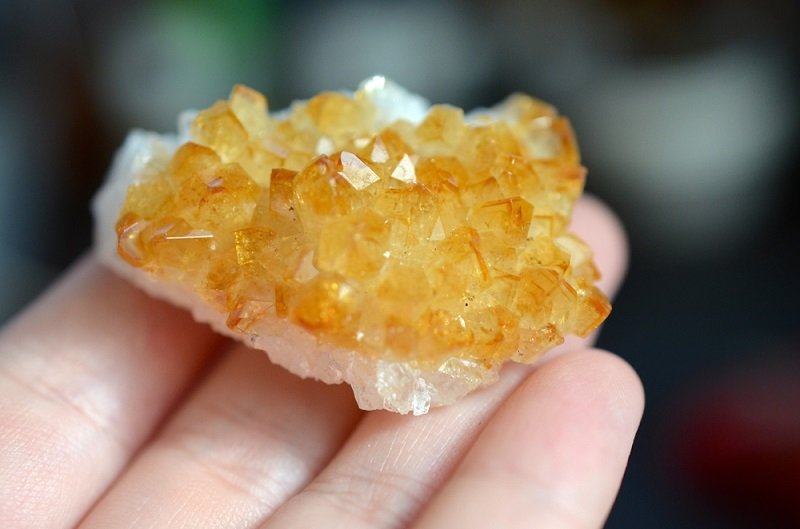
Citrine is a variety of quartz that’s colored yellow to orange. It’s almost identical in physical makeup to amethyst, but differences in the original formation of the crystal cause it to take on a different color. Quartz is silica, SiO₂, with a macroscopic crystal form. Silica makes up a large amount of the earth’s crust, and quartz is one of the most iconic crystals around. It’s known for its hexagonal shape and sharp terminations at the end of the crystal.
10. Fluorite
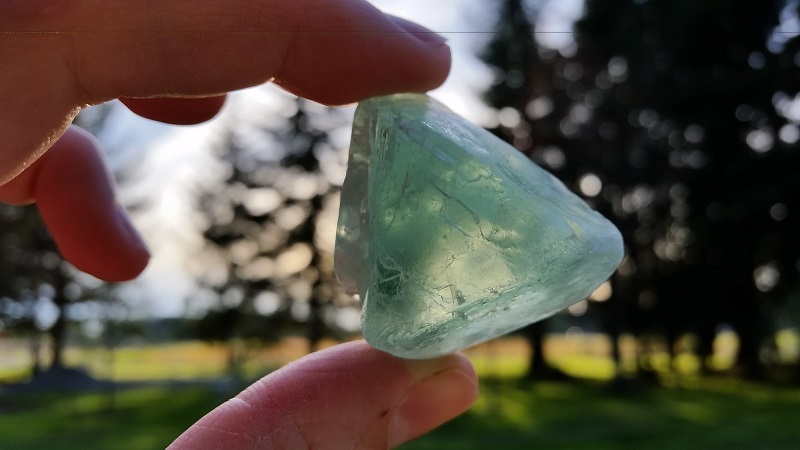
Fluorite is one of the most popular stones among collectors due to its enormous range of colors. It is often called the most colorful mineral in the world. Amethyst, deep blue, vivid purple, sunny yellow, crystal clear, and rainbow – such a great variety of colors. Violet or purple is the classic and most common fluorite color, while blue and yellow fluorite is very rare.
Fluorite (also known as fluorspar) is a gangue mineral that belongs to the halide minerals. Commercially, it is named fluorspar and is composed of calcium fluoride (CaF2). It is used industrially in the manufacturing of certain enamels, glass, and some optical lenses and as smelting flux.
11. Garnets
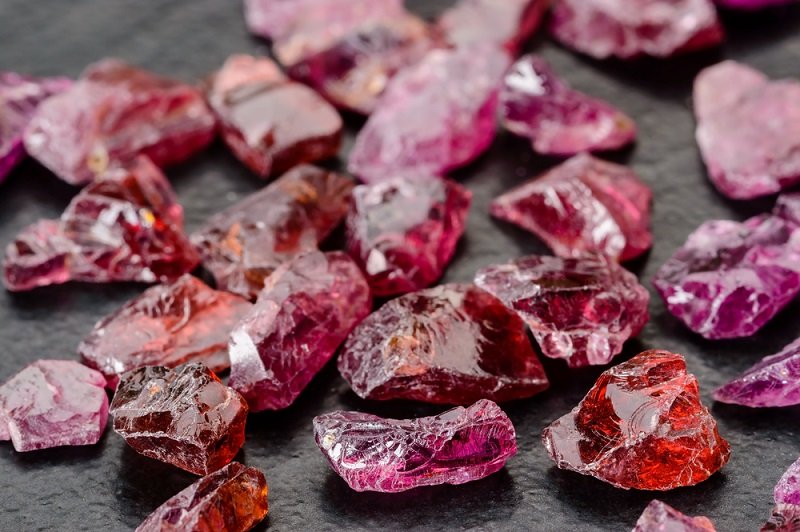
Garnets are one of the oldest known gemstones and have been used since antiquity for both their beauty and hardness. The latter, in particular, made them useful to the ancients since garnet could easily be fashioned into an abrasive. Garnets have a variable chemical composition, which makes them a bit unique. This family of gemstones is always a silicate (SiO₄) with two other elements. Thus, “pure” garnet is always XₙYₙ(SiO₄). The X and Y groups are used to determine the family of garnet the stones fall into.
12. Grape Agate
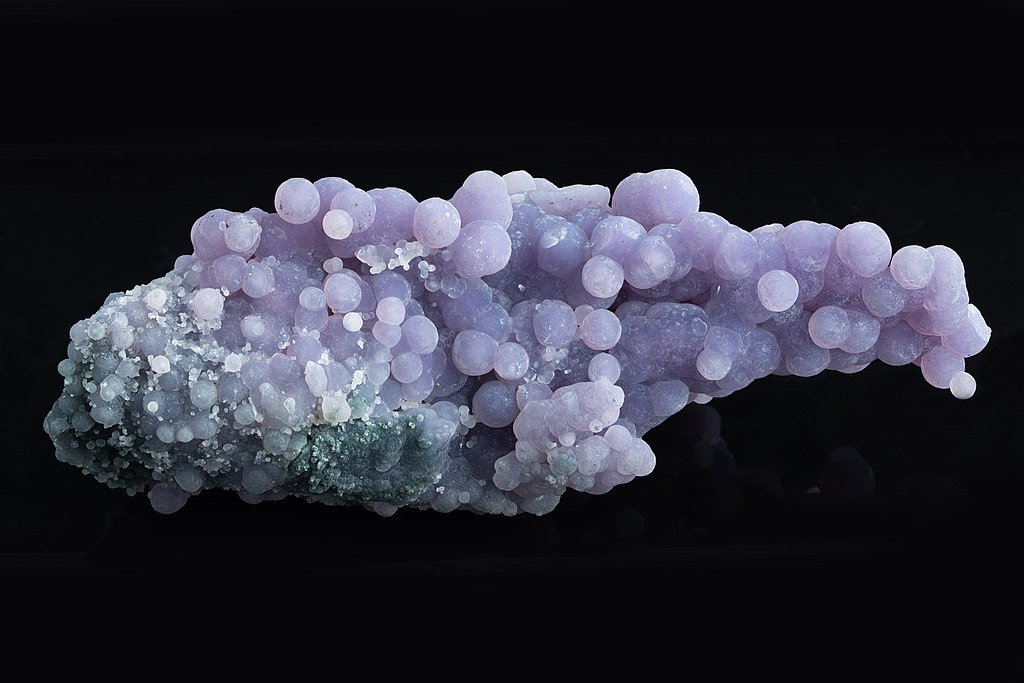
Strictly speaking, Grape Agate is a botryoidal formation of purple chalcedony-ish material. Most specimens have a relatively rough texture along the outside, rather than being perfectly smooth. Some specimens also come in green, and bi-color specimens are highly prized.
13. Howlite
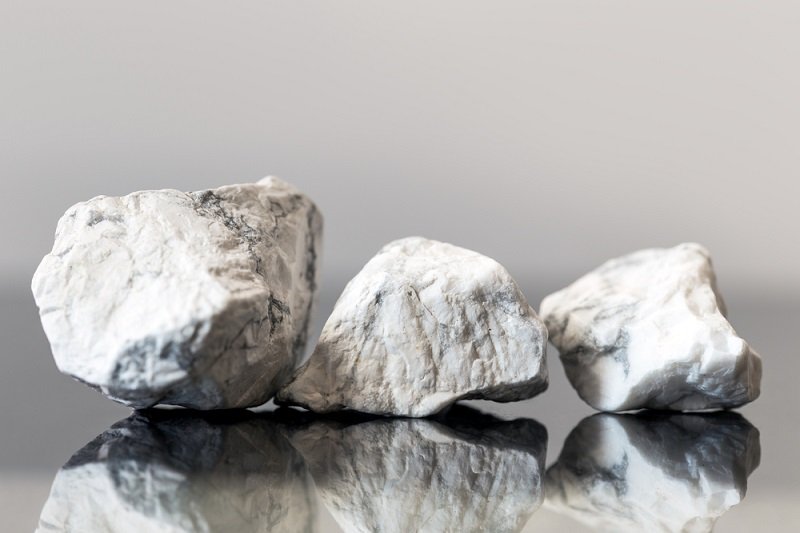
Howlite is, perhaps, best known for being used to imitate other gemstones. The veining makes it look similar to many stones with a lot more cash value, such as turquoise and lapis. At least with a bit of dye added. On its own, howlite is a relatively soft mineral sitting at a 3.5 on the Moh’s hardness scale. This makes it very workable, and the truth is that the majority of white turquoise deposits are a chalky mass that’s much softer.
14. Jasper
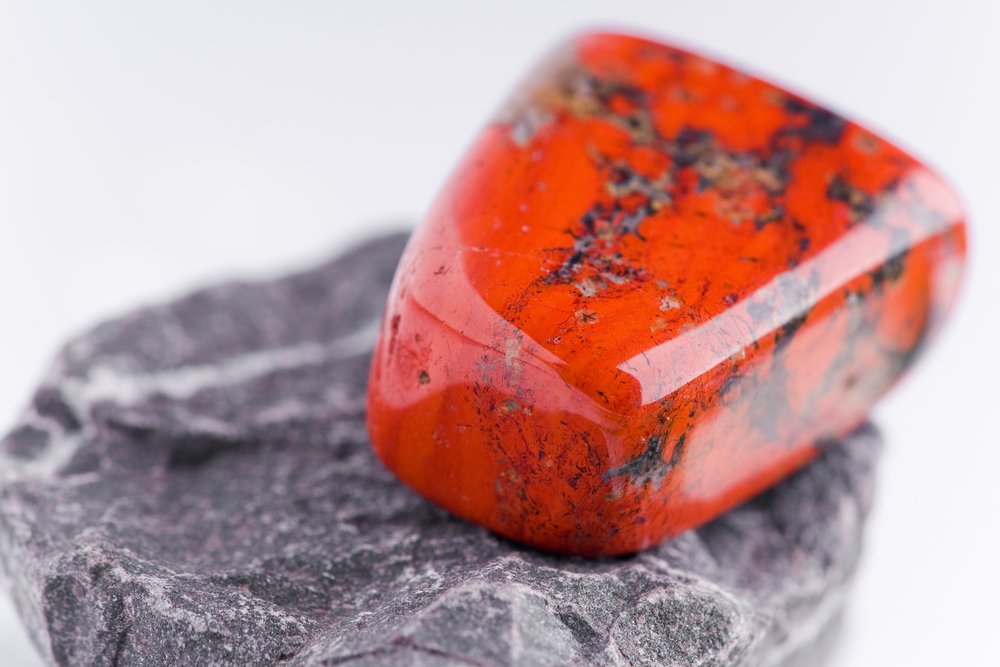
Jasper is a form of cryptocrystalline silicon dioxide(SiO₂ or silica) that’s opaque. Jasper is usually characterized by bright colors, including green, red, blue, and many others. Jasper is distinct from agate due to its opacity. A true jasper blocks all light, although some brecciated jaspers will have pockets of chalcedony in them. Generally, the stone will have some kind of pattern as well, even if it’s within a single hue.
15. Labradorite
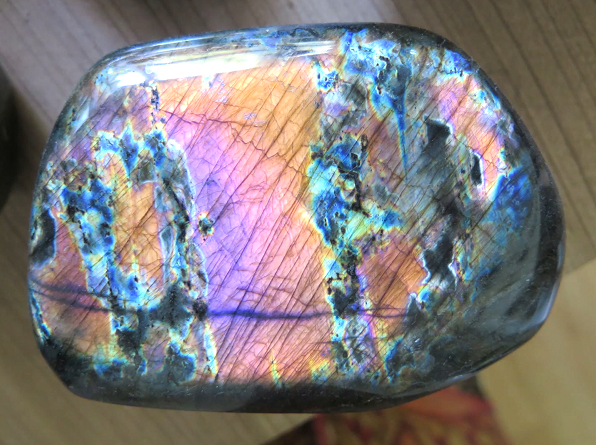
Labradorite is a calcium-rich feldspar, with included crystals that create a peculiar effect in the light. The crystals of labradorite form in a triclinic manner, often lacking symmetry. Labradorite is most commonly found in formations that occur in other igneous rocks. Where it can be found, the crystals are often contained within gabbro and basalt.
16. Leopard Jasper
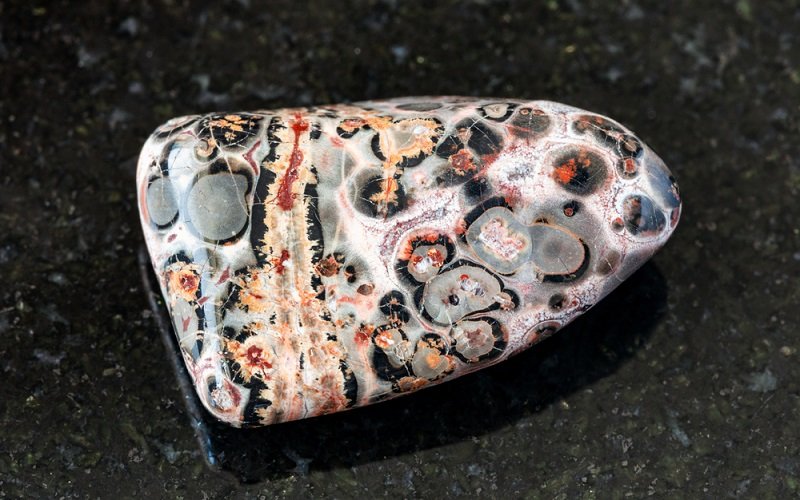
Leopard Jasper is a cryptocrystalline silica variety that’s opaque and has patterns that resemble a leopard’s spots. It’s also called Leopard Stone and Leopard Spot Jasper, it’s all the same thing. These stones generally have a lighter-colored background, with “spots” that are outlined in black. Its patterns are similar to other jasper-type stones, notably Ocean Jasper and Orbicular Jasper. The latter is very close to Oolitic Jasper, but they have a different proposed formation type.
17. Mexican Fire Opal
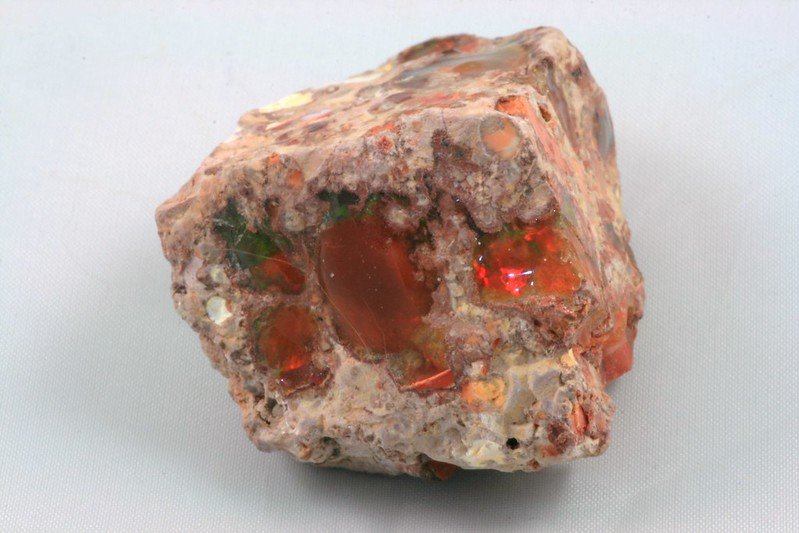
Mexican fire opal is one of the more famous gems sourced in the upper portion of the Americas. These yellow-to-orange opals come in a wide variety of different looks, but the common factor that binds them together is translucency and colors.
18. Moonstone
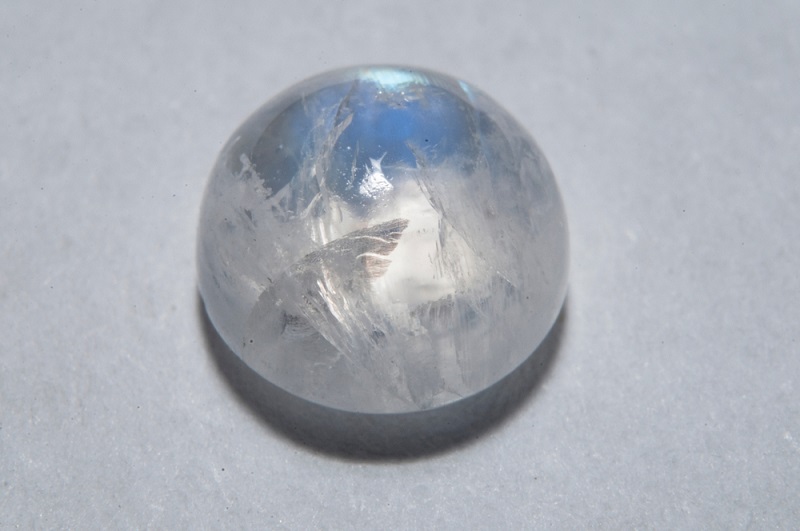
Moonstone is a subvariety of orthoclase-feldspar that displays an optical effect known as opalescence. This simply means that the surface of the stone catches light in a distinctive way, similar to common opal, not that it has the fire that typifies precious opal. The name is also used for another feldspar mineral, Rainbow Moonstone, which is essentially ultra-high clarity labradorite and displays an internal fire similar to the surface fire of labradorite.
19. Mozarkite
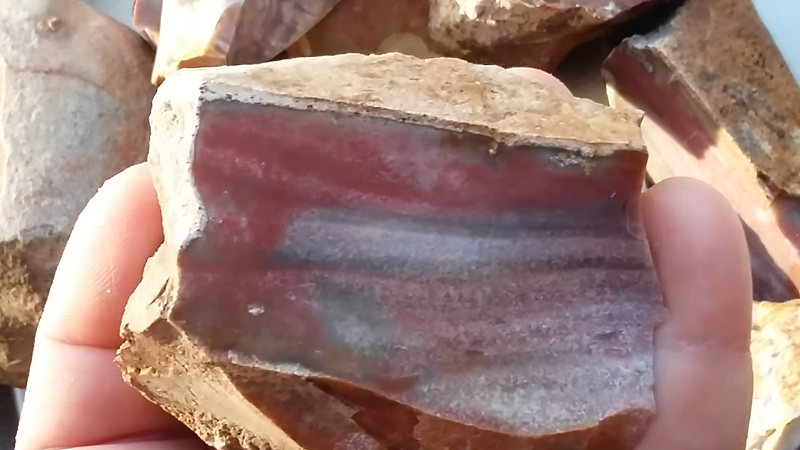
Mozarkite is the common name for a specific variety of chert or jasper that’s found only in Missouri. It’s comprised primarily of microcrystalline silica combined with chalcedony. The structure of the stone makes it quite hard, rivaling agate at 7-7.5, and it’s suitable for jewelry use. The name itself is a portmanteau of Missouri and Ozark, which is natural since… the stone comes from the Ozarks in Missouri.
20. Obsidian
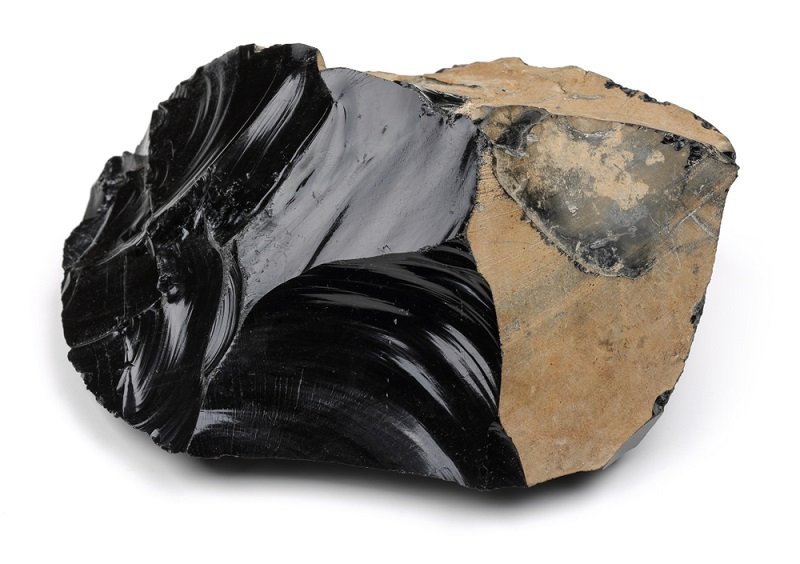
Obsidian comes in a staggering range of colors and shapes, it can be hard to keep up! This volcanic glass is far from a simpler mineraloid, it opens up a family of “stones” that have an incredible variety of colors and optical effects. Obsidian isn’t actually a rock, we’re being quite literal when we refer to it as a glass. The majority of obsidian is at least 70% silica by weight, but it lacks the crystalline structure we see in quartz or even in microcrystalline stones like chalcedony.
21. Opal
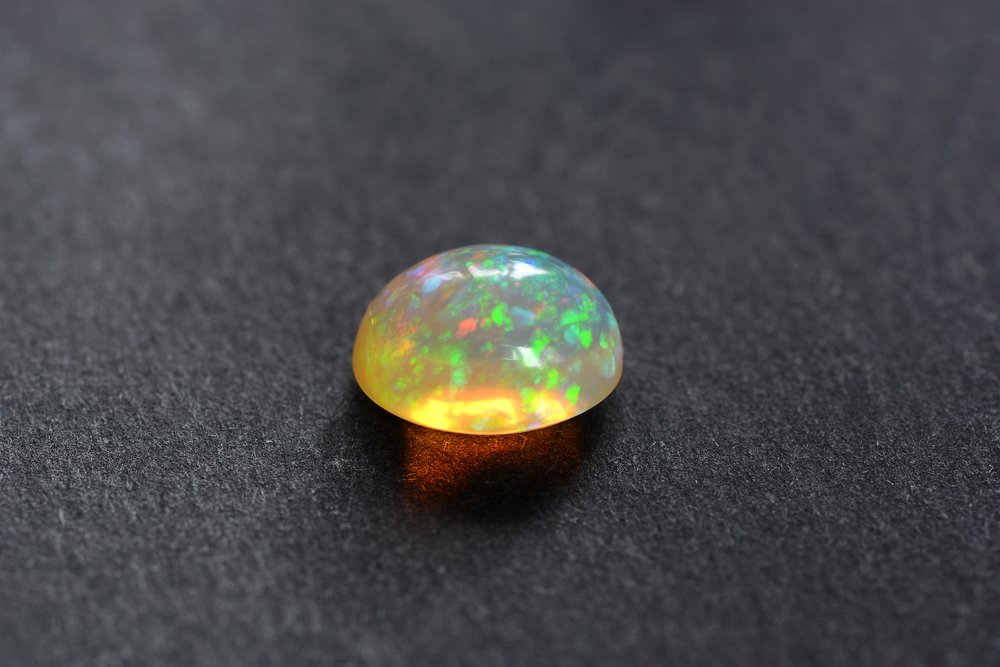
Opals, as a mineral, are comprised of SiO₂(or silica) with a high percentage of water. Opal is actually amorphous, like glass, rather than a true crystal. It’s a common find in nature. Opal is deposited at low temperatures and pressures compared to crystalline forms of silica. The moisture percentage ranges from 3% to 21%, but most are on the lower side. 6%-10% is most common.
22. Peacock Ore
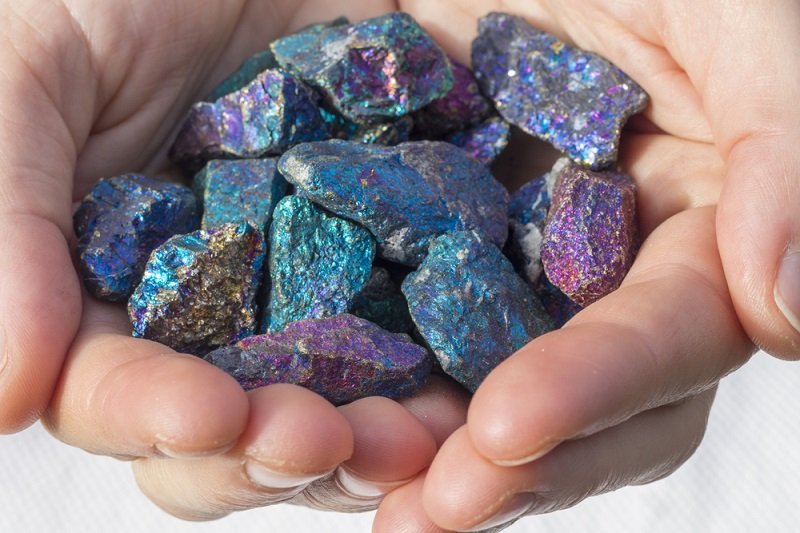
A stunning display of natural beauty, peacock ore has a prized place in many collections. It’s iridescent and mysterious, and always found in a somewhat rough form which makes it a prized specimen.
Peacock Ore is kind of a misnomer, we actually have two different minerals that end up with the same effect. These are bornite and chalcopyrite.
These minerals often occur within the same deposits, further confusing the matter. Bornite is an important copper ore, which is why the surface bears such incredible coloration. It’s simply uneven oxidation of copper.
On the other hand, chalcopyrite resembles iron pyrite. It has a tetragonal crystalline structure, a brass coloration, and occurs in large-grained masses as well as smaller crystals. Chalcopyrite isn’t quite as easily oxidized as bornite.
23. Petrified Wood
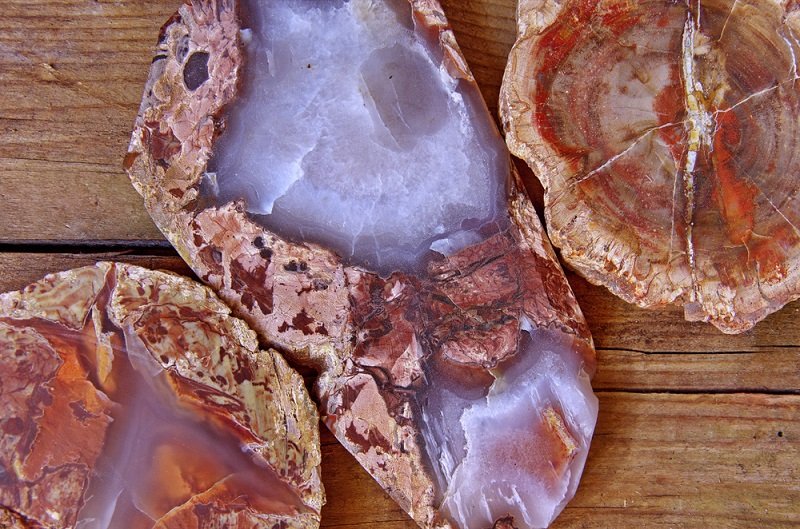
Petrified wood is a very unique geological formation. Nature has worked twice here: first by creating a tree and then by turning it into stone. It is a stone with preserved natural wooden texture. However all of the organic materials of the wood (cellulose and lignin) are no longer present. Instead, those organic materials have been replaced by silica minerals (quartz, chalcedony, agate, opal) and sometimes by calcite, pyrite, or native copper.
24. Puddingstone
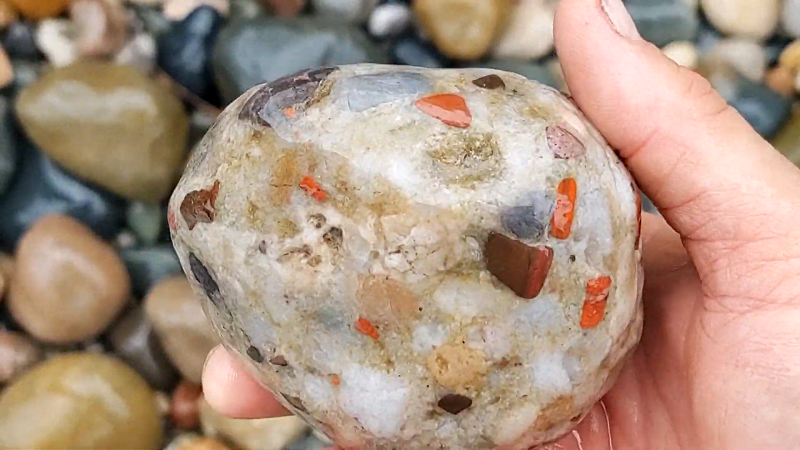
Puddingstone is the unofficial name given to quartz conglomerate. This stone ranges from small pebbles to huge boulders and has been found throughout the world. You may never have heard the name puddingstone, but it is very likely you have seen at least one. This is especially true if you spend much time near flowing streams, especially in lower Canada and the upper Michigan areas. The Great Lakes region is very popular for hunting this unusual stone.
25. Rose Rocks
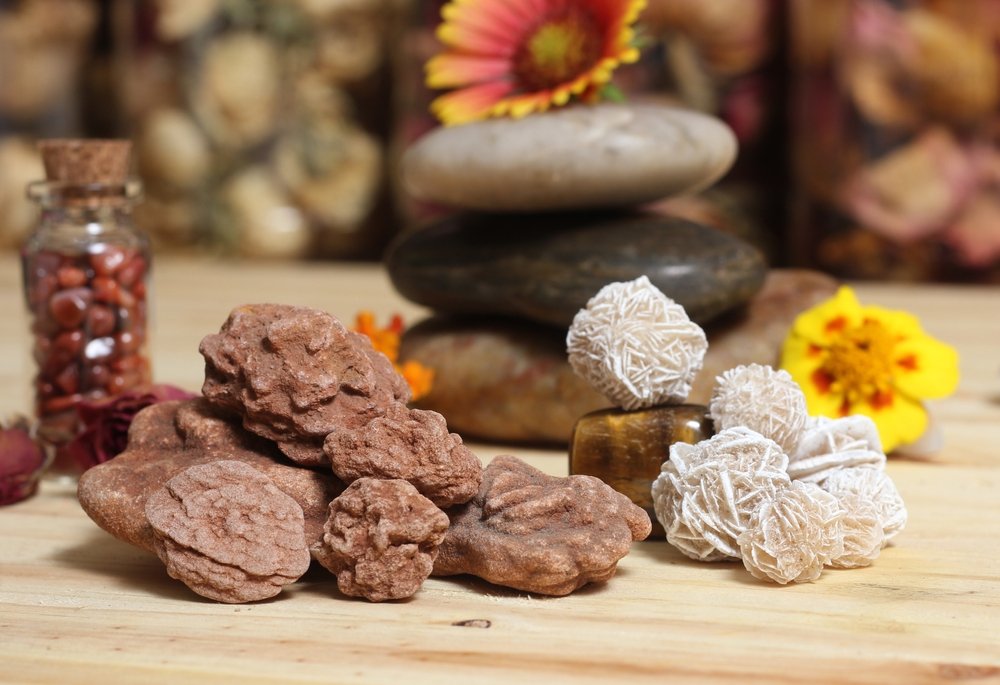
One of the most distinctive formations in the world, rose rocks are an incredible little natural wonder. Their coloration and form remind one of roses immediately, and they seem almost carved from the rock they’re made of.
Rose rocks are a special form of the mineral barite. The crystals create a form very similar to a rose, with a dusty red color and individual blades appearing as petals. They can be found alone or in large clusters, depending on the specimen.
Rose Rocks are a very rare formation, found in only a few select locations. The working theory is that they were formed as barite precipitated out of an ancient sea, surrounding bits of silica sand and growing from there.
26. Sapphire
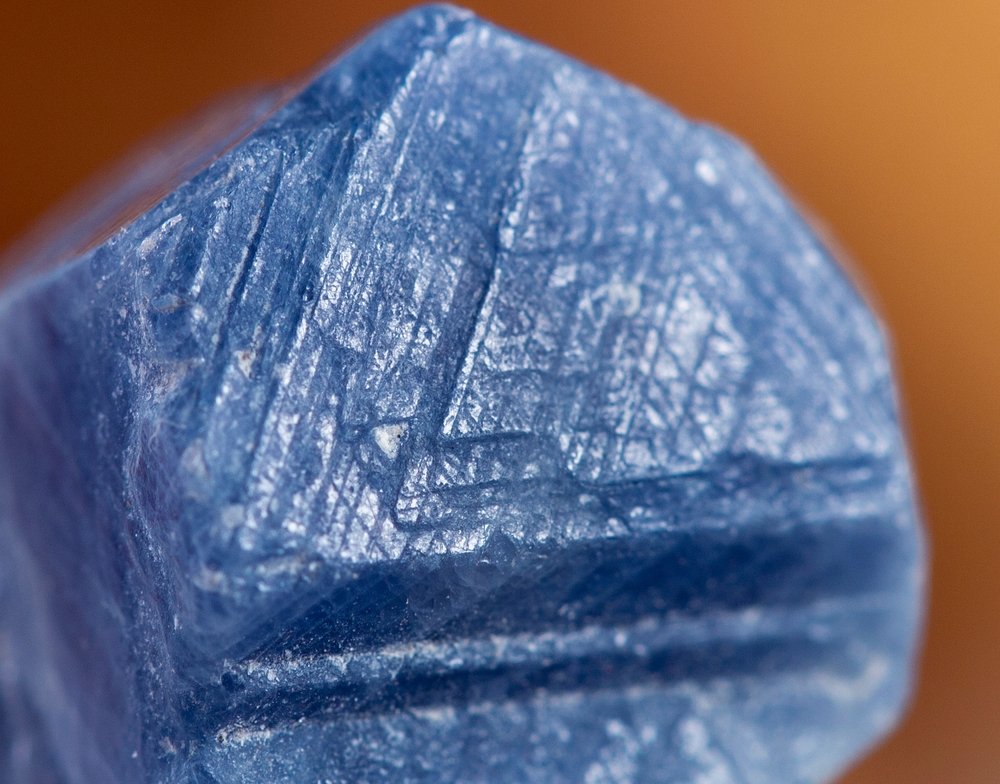
Sapphire is the most costly and precious blue gemstone. It is a highly sought-after gemstone because to its exceptional color, hardness, durability, and shine. Sapphire, without any color prefix, refers to the blue variant of the mineral Corundum in the gem trade. The word Sapphire, however, includes all other gem types and hues of Corundum, with the exception of Ruby, the red variant of Corundum, which has its own name since antiquity.
27. Selenite
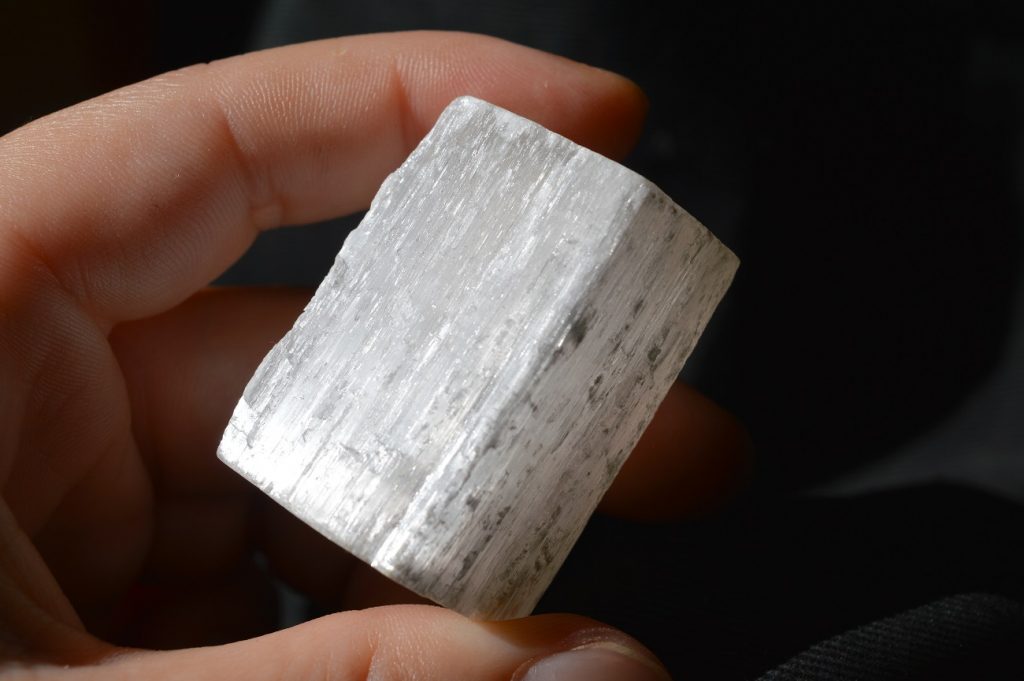
Selenite is an interesting mineral. It’s often seen in large, high-clarity crystals which are both beautiful and soft compared to the majority of compounds. This coveted form of gypsum comes in quite a few colors and variations, and it has some properties which make it very easy to identify compared to look-alikes.
Selenite is a crystallized form of the mineral gypsum. Selenite is most often seen as white, clear crystals. There are other forms, with various colors, which we will touch upon in a moment. It’s distinct from the other gypsum forms.
28. Sodalite
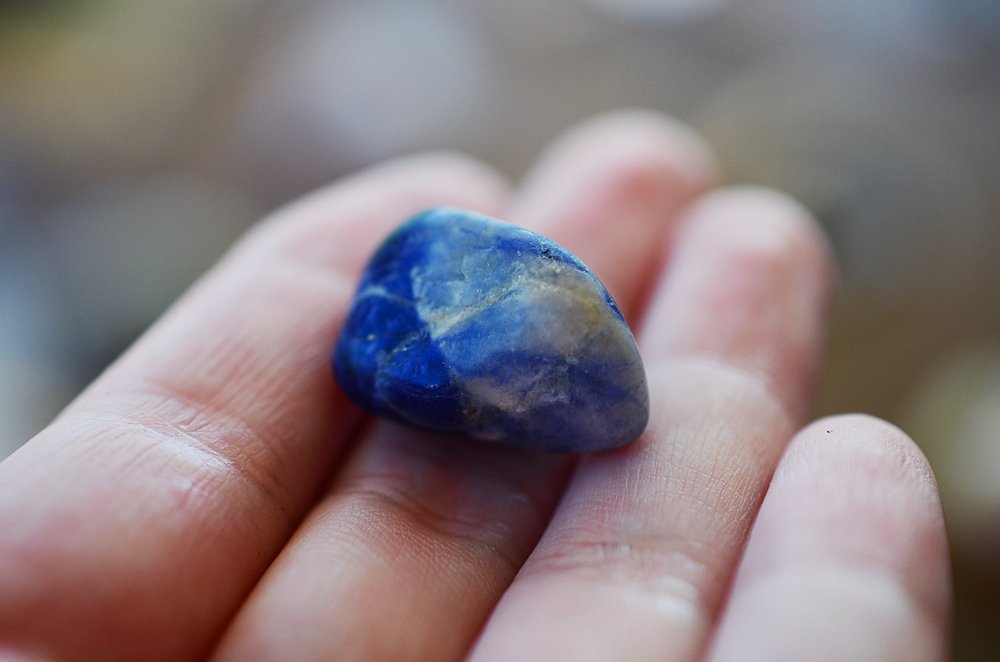
Sodalite is a tectosilicate mineral, usually royal blue in color. With that said, what we commonly refer to as sodalite is more often a rock that happens to contain the mineral itself. It occurs in large masses, with some of the best quality material found in Ontario.
Oddly, despite its beauty and the large amounts produced, it’s a recent addition to the family of rocks. Since it was discovered in the 1800s it has become a relatively important decorative stone. Since it occurs in large formations it can be used to make things like vases and bowls in addition to smaller carvings.
29. Staurolite (Fairy Crosses)
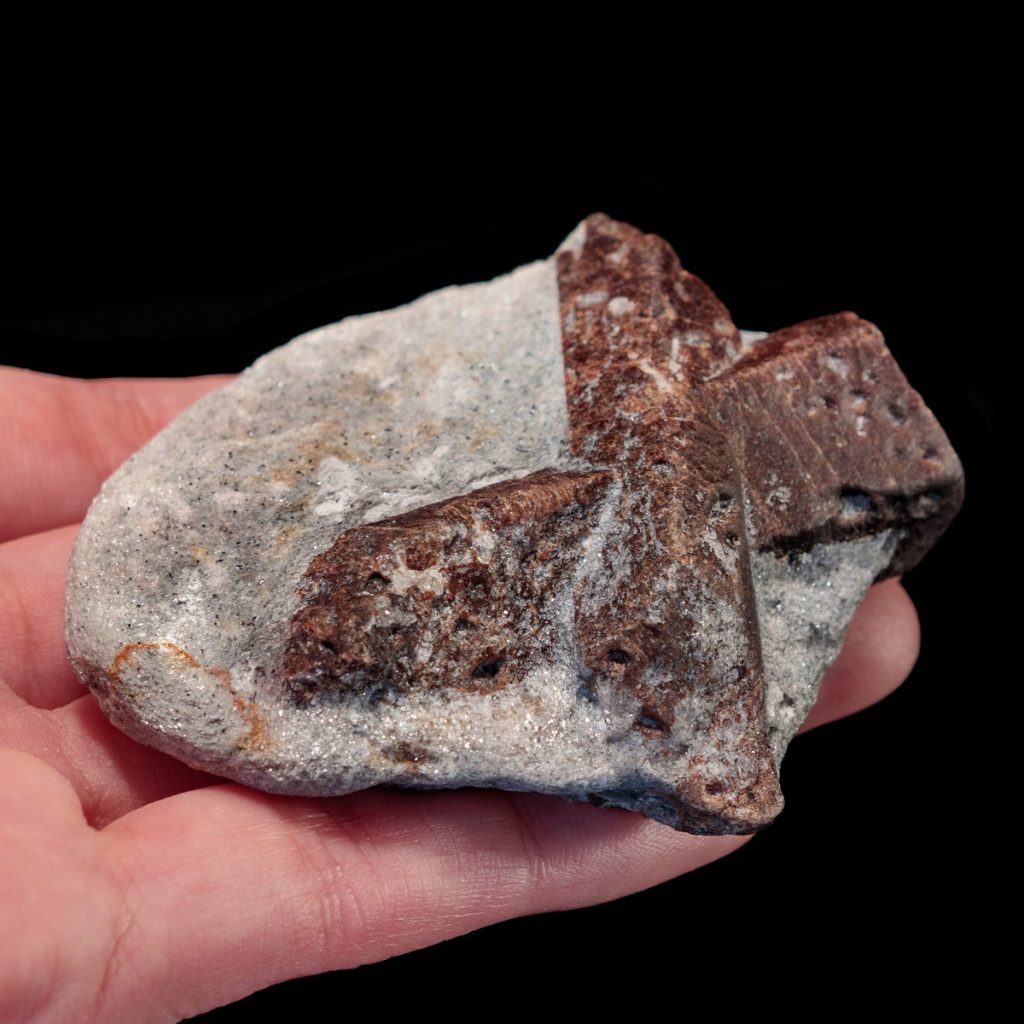
Staurolite is a fascinating silicate mineral. While its properties aren’t the most interesting, it’s the formation of the crystals that makes this mineral a favorite among collectors.
Staurolite is a silicate mineral mainly known for its crystal formation. The occasionally used name “Fairy Cross” is quite accurate, as the twinned crystals often form at distinct right angles ot each other. This creates a cross that can be seen in most specimens of the mineral.
Staurolite itself is a simple mineral. It has a hardness of 7.0 on the Moh’s scale and is usually a reddish-brown to black color depending on the location and the individual crystals. As a metamorphic material, it’s often found alongside stones like almandine garnets and kyanite. It usually occurs in mica.
30. Thundereggs
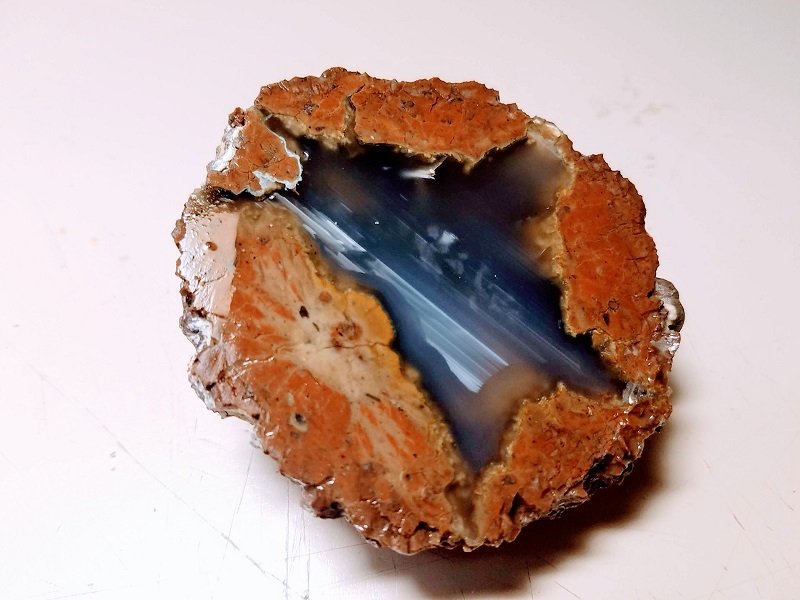
Thundereggs are a prized geologic formation due to their beautiful cores contained within a rough outer layer. Similar to a geode, a thunderegg is a hollow rock which has been filled with mineral deposits. Generally found in sizes ranging from golf ball sizes to softball sizes, their inner contents are usually characteristic to the specific site. Thundereggs are unique in that they are formed only in flows of rhyolite lava.
31. Tourmaline
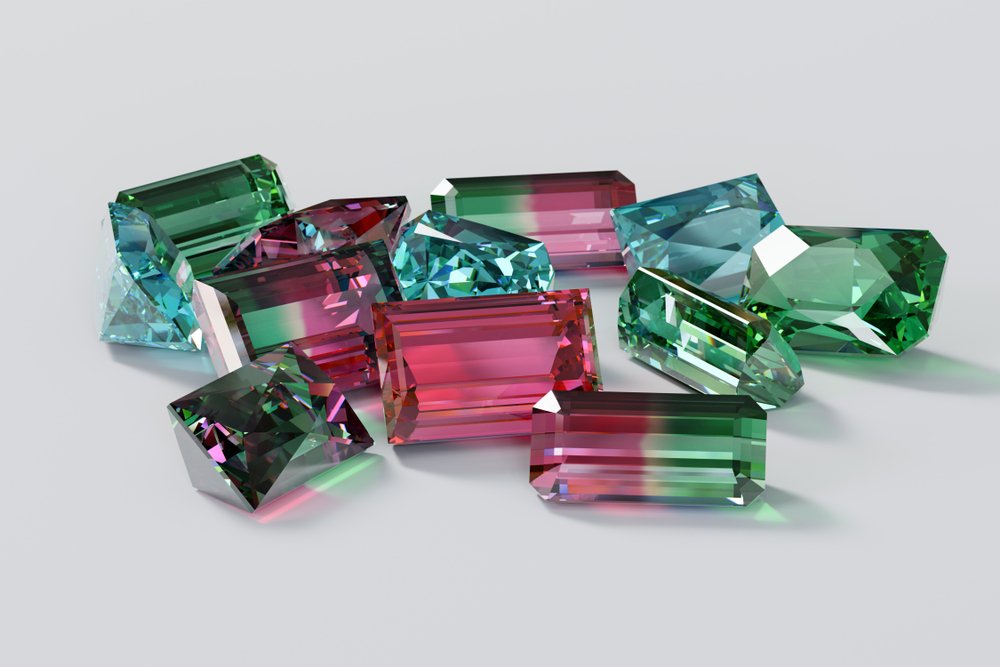
Tourmaline refers to a larger group of boron silicate minerals that share the same physical characteristics and crystal structure that occur in numerous colors and are pyroelectric.
Tourmaline is composed of aluminum, iron, magnesium, sodium, lithium, or potassium elements and occurs as long, slender to thick prismatic-comular crystals that are usually triangular in cross-section.
Tourmaline is the birthstone for the month of October, and it is one of the most popular gemstones in the world.
They are used for jewelry making and are a popular collector’s item for rock and mineral enthusiasts as well as rockhounds. A stone with well-formed crystals and attractive colors can fetch thousands of dollars.
32. Quartz
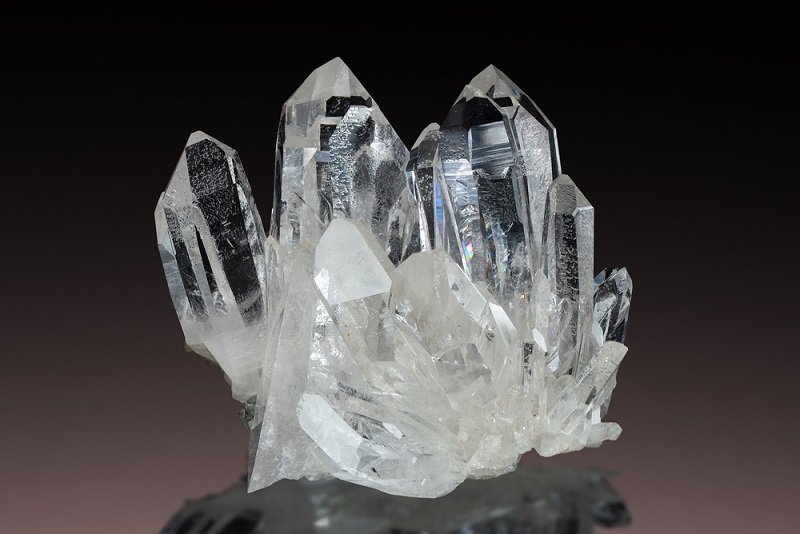
Quartz is one of the most sought-after crystals among collectors. In addition to it’s shimmering clarity, quartz specimens vary widely and many people find them very attractive. It’s a lot of information to take in for a newbie.
Quartz is a macrocrystalline form of silicon dioxide(SiO₂ or silica). The crystal formations are visible to the naked eye, unlike cryptocrystalline forms of silica like chalcedony or jasper.
Quartz crystals are usually hexagonal, with six sides and a terminated point resembling a pyramid. Some crystals are double terminated, meaning they have a point on both ends.
- Online rock and mineral club for collectors of all levels!
- Find community with like-minded rock and mineral enthusiasts.
- Monthly Giveaways!
- Free Access to Entire Digital Library of Products (annual memberships)

